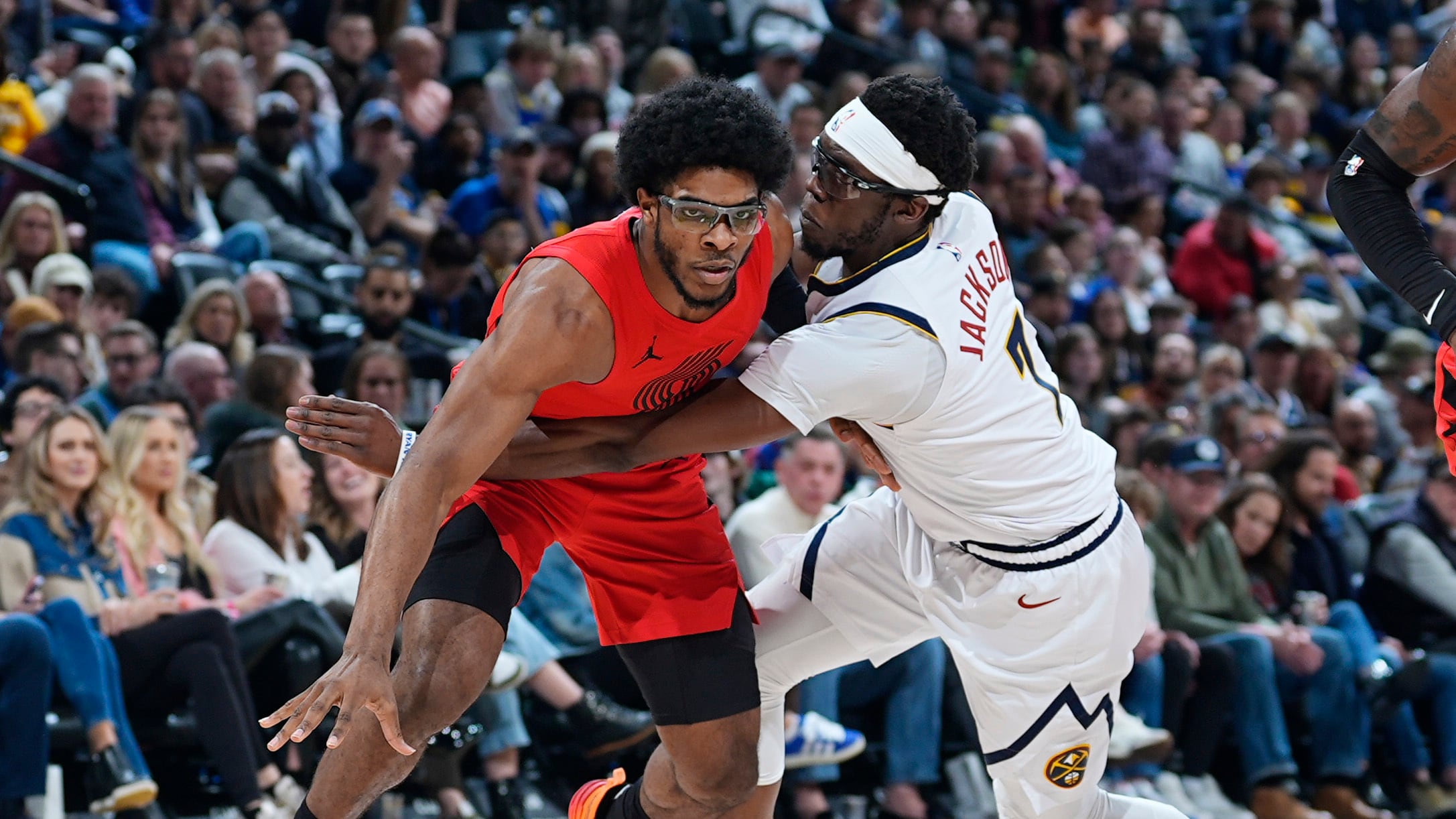“Triple Threat” is a column by James Bao in which he covers trends in the NBA through an analytical lens.
It’s time to talk about Scoot Henderson.
“I think I have the ability to go No. 1,” Henderson said in an interview at the Draft Combine last year, before the Portland Trail Blazers eventually picked him third overall.
The former G League guard came in at 6-foot-3, weighing 202 pounds — fairly typical NBA guard measurements. But his athleticism made him stand out, drawing comparisons to explosive guards like Derrick Rose, Russell Westbrook and Ja Morant.
However, Henderson’s transition to the NBA has been anything but smooth. The rookie, who’s supposed to be the Trail Blazers’ next franchise player, has suffered from injuries since his Summer League debut and has been unable to find any momentum at the NBA level.
And, unfortunately, I don’t think it’s going to get any better soon, especially if his perimeter game fails to improve.
The issue with explosiveness
Front offices are enamored by athleticism. But while raw talents light up the court, injuries cast a shadow. And more often than not, that’s the price of explosiveness.
During Rose’s 2010-11 MVP season, more than 75% of his shot attempts were within the arc and almost 40% of his total points came from inside the paint. That’s ridiculous for a point guard, even considering the league’s less perimeter-oriented playbooks at the time.
But during the playoffs of the very next season, he tore his left ACL after landing awkwardly from an explosive hop step into the paint.
The injuries limited him to just 39 games in the 2011-12 season and sidelined him for the entire following year. It also sparked constant speculation about “what if Rose never got injured?”, as the three-time All-Star’s career hasn’t been the same since.
Recently, we’ve seen similar stories of injuries impacting explosive guards, with an Achilles tear in 2019 derailing John Wall’s career and Morant’s season-ending labral tear in January of this year.
High usage rates
One other thread connects these cases — a high usage rate. Rose, Wall and Morant were all, at one point, the No. 1 scoring option on their teams. This put them under the constant demand of ball handling, taking copious shot attempts and making aggressive plays that pushed their bodies to the limit:
- Rose played 37.4 minutes per game in the season before his ACL injury.
- Wall played 34.5 minutes a game from 2018-19 before a heel injury shut him down.
- Morant averaged 35.3 minutes over nine games this season before his season-ending shoulder injury.
Rookie Henderson has only averaged 27 minutes thus far on a guard-heavy Trailblazers team, and still couldn’t stay clear of setbacks:
- Left his Summer League debut in the third quarter due to a shoulder injury.
- Out for 21 days in November due to bone bruising and an ankle sprain.
- Saw just eight minutes of action on January 19 due to a nasal contusion.
- Played six minutes on January 26 due to a quad contusion.
- Hasn’t played a game since All-Star Weekend (February 16-18) due to a left adductor strain.
Given his potential role as a cornerstone in Portland’s rebuild, Henderson’s struggles to stay healthy raise concerns about his long-term durability once, and if he’s even able to fully embrace the role of a starting point guard.
Lack of perimeter offense
The importance of having a solid perimeter game in today’s NBA can’t be overstated. And this extends beyond guards, as we’ve seen a surge of stretch fours and 7-footers hitting shots from deep, including the No. 1 pick in Henderson’s draft, Victor Wembanyama.
Right now, Henderson’s limited ability from 3-point range (27.5% accuracy and less than one 3-pointer made per game in the G League) suggests that teams don’t need to defend him tightly beyond the arc.
Although his 3-point shooting has slightly improved in the NBA (31% accuracy and 1.2 made per game), Henderson still lacks the consistent deep-range threat to stretch defenders a foot or two past the arc. This makes him rely on blowing past defenders with pure speed and force, then battling centers and helpside defenders inside the paint.
And the downside of that is, again: injury risks.
It’s impossible to deny the former five-star prospect’s undeniable talent and ideal frame — he’s often referred to as “a point guard built like a linebacker.”
However, concerns surrounding his long-term health cannot be ignored. But if Henderson develops a consistent 3-point shot and manages to stay on the court, the sky’s the limit for the 20-year-old.
“Triple Threat” runs every Tuesday.
